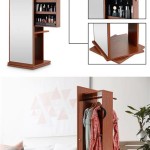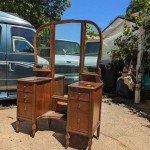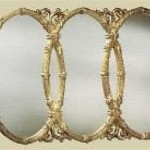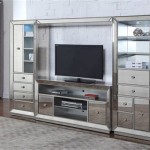How To Hang a Mainstays Over-the-Door Mirror
Mainstays over-the-door mirrors provide a convenient and space-saving solution for adding a reflective surface to various rooms. Their design allows for easy installation without the need for drilling or mounting hardware directly onto walls, making them ideal for renters or those seeking a temporary mirror solution. Understanding the proper procedures for hanging these mirrors is crucial for ensuring their stability, preventing damage to doors, and maximizing their functionality.
This article will provide a comprehensive guide to hanging a Mainstays over-the-door mirror, covering the necessary preparations, the installation process, and essential safety considerations. It will also address common issues encountered during installation and offer practical solutions to ensure a secure and aesthetically pleasing result.
Preparing for Installation
Prior to beginning the installation process, several preparatory steps are essential to ensure a smooth and successful outcome. These steps involve assessing the door's suitability, gathering the appropriate tools, and carefully inspecting the mirror and its components.
The first step involves determining whether the intended door is suitable for accommodating the over-the-door mirror. Key factors to consider include the door's thickness and its overall structural integrity. Mainstays over-the-door mirrors are typically designed to fit standard door thicknesses, generally ranging from 1 3/8 inches to 1 3/4 inches. Attempting to install the mirror on a door that is significantly thicker or thinner than this range may compromise the stability of the installation and potentially damage the door or the mirror itself. Furthermore, it is important to examine the door for any signs of damage, such as warping, cracks, or loose hinges. Installing the mirror on a damaged door can exacerbate existing problems and may lead to the mirror becoming dislodged or falling.
Next, gathering the necessary tools and materials is crucial for a streamlined installation. Although Mainstays over-the-door mirrors typically come with the required over-the-door hooks, it is advisable to have a few additional tools on hand to facilitate the process. A screwdriver, either Phillips head or flathead depending on the screw type used in the mirror's assembly, may be needed to tighten any loose components or adjust the hooks. A level is essential for ensuring that the mirror hangs straight and does not appear crooked. A measuring tape can be useful for verifying the door's thickness and determining the optimal placement of the hooks. Soft cloths or padding materials are recommended to protect the door's surface from scratches during installation. Finally, consider having a step stool or ladder available if the door is particularly tall, as this will provide better access to the top of the door for attaching the hooks.
Before proceeding with the installation, carefully inspect the mirror and its components for any signs of damage or defects. Check the mirror surface for cracks, scratches, or blemishes. Examine the frame for any loose joints, chips, or imperfections. Ensure that all necessary hardware, including the over-the-door hooks and any screws or fasteners, are present and in good condition. If any damage or defects are identified, it is important to address them before proceeding. Contacting the manufacturer or retailer for a replacement or exchange may be necessary. Attempting to install a damaged mirror can be hazardous and may result in further damage or injury.
The Installation Process
Once the preparatory steps have been completed, the actual installation of the Mainstays over-the-door mirror can begin. This process involves attaching the over-the-door hooks, positioning the mirror on the door, and ensuring its stability and alignment.
The first step is to attach the over-the-door hooks to the frame of the mirror. Mainstays mirrors typically come with hooks that are designed to slide onto the top edge of the door. The specific method of attachment may vary depending on the model of the mirror. Some hooks may simply slide into pre-drilled slots on the back of the frame, while others may require the use of screws or other fasteners. Carefully follow the instructions provided with the mirror to ensure that the hooks are attached correctly and securely. Make sure that the hooks are oriented in the proper direction, with the curved portion facing outwards, so that they can properly grip the top edge of the door. Tighten any screws or fasteners firmly, but avoid over-tightening them, as this can damage the frame of the mirror. Double-check that the hooks are securely attached before proceeding to the next step.
Once the hooks are attached, carefully lift the mirror and position it on the door. Align the hooks with the top edge of the door and gently slide the mirror into place. Ensure that the mirror is hanging straight and that the hooks are securely gripping the door. If the mirror feels loose or unstable, remove it and re-adjust the hooks or the door’s suitability. This step is crucial for preventing the mirror from falling and causing damage or injury. Use a level to verify that the mirror is hanging vertically. If the mirror is not level, adjust the position of the hooks until it is. Small adjustments can make a significant difference in the overall appearance and stability of the installation.
After the mirror has been positioned and leveled, it is important to further secure it to prevent movement or accidental dislodgement. Some Mainstays over-the-door mirrors may include additional hardware, such as adhesive strips or bumpers, to provide extra stability. Apply these as instructed, ensuring that they are properly aligned and securely attached. If no additional hardware is provided, consider adding your own. Adhesive bumpers can be placed on the back of the frame to prevent it from scratching or damaging the door. Small strips of double-sided tape can be used to secure the bottom edge of the mirror to the door, further reducing movement. However, be cautious when using adhesive products on painted doors, as they may damage the paint when removed. Test the stability of the mirror by gently pushing or shaking it. If it moves excessively or feels unstable, re-evaluate the installation and make any necessary adjustments.
Addressing Common Installation Issues
Despite careful preparation and diligent execution, certain challenges may arise during the installation of a Mainstays over-the-door mirror. Addressing these issues promptly and effectively is essential for ensuring a successful and secure installation.
One common issue is that the mirror may not hang flush against the door. This can be caused by several factors, including uneven door surfaces, improperly adjusted hooks, or interference from door hardware. If the door surface is uneven, consider adding shims or padding to the back of the frame to compensate for the variations in the surface. If the hooks are not properly adjusted, try repositioning them or bending them slightly to achieve a better fit. If door hardware, such as doorknobs or locks, is interfering with the mirror, consider moving the mirror slightly to avoid the obstruction. In some cases, it may be necessary to remove or relocate the door hardware to allow the mirror to hang properly. If the mirror still does not hang flush, it may be necessary to consult with a professional installer.
Another potential issue is that the mirror may rattle or vibrate when the door is opened or closed. This can be caused by loose connections, inadequate padding, or excessive play between the hooks and the door. To address this, tighten any loose screws or fasteners on the frame and hooks. Add padding or bumpers to the back of the frame to dampen vibrations. Consider using felt pads or rubber bumpers to provide a cushion between the mirror and the door. If there is excessive play between the hooks and the door, try bending the hooks slightly to create a tighter fit. Alternatively, you can add small pieces of rubber or felt to the inside of the hooks to fill the gap and reduce movement.
Finally, the over-the-door hooks may damage the door's surface. This is more likely to occur on doors with delicate finishes or soft materials. To prevent damage, use hooks that are specifically designed to protect door surfaces. These hooks typically have a coated or padded interior that prevents them from scratching or marring the door. Alternatively, you can add your own padding to the hooks using felt, rubber, or other soft materials. Ensure that the padding is securely attached to the hooks and that it covers all areas that come into contact with the door. Regularly inspect the door's surface for any signs of damage and take steps to address them promptly. If you notice any scratches or marks, clean them gently with a soft cloth and mild cleaner. Consider applying a protective coating to the door's surface to prevent future damage.

Easy Way To Hang S Est Full Length Mirror Under 7

Mainstays Over The Door Mirror With Hardware 14 25in X 50 Rustic Grey Com

Mainstays Over The Door Mirror With Hardware 14 25in X 50 Black Com

Mainstays Over The Door Mirror With Hardware 14 25in X 50 Rustic Grey Com

Mainstays Over The Door Mirror With Hardware 14 25in X 50 Black Com

4 Pack Mainstays Over The Door Mirror With Hardware 14 25in X 50 White Com

Mainstays Over The Door Mirror With Hardware 14 25in X 50 Rustic Grey Com

4 Pack Mainstays Over The Door Mirror With Hardware 14 25in X 50 White Com

Kmart Over The Door Mirror Instructions

Mainstays Over The Door Hooks For A Mirror Does Not Include Black








